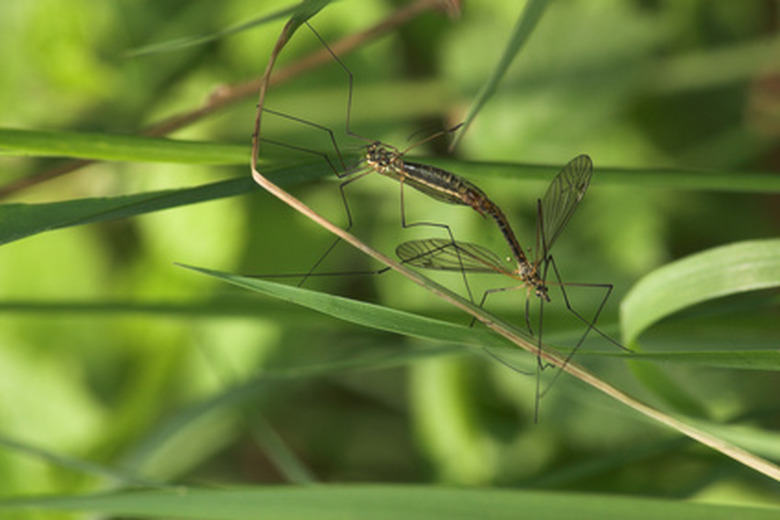Components Of Insecticide
Insecticides contain one or more active ingredients. Early insecticides were based on substances developed as chemical warfare agents, accorting Reuters. Not surprisingly, these early insecticides had toxic effects on people and other animals. More modern insecticides are often similar to naturally occurring substances, and have much lower toxicity. When using any insecticide, however, it is very important to follow all manufacturer's safety and application instructions.
Organochlorine
One active ingredient sometimes found in pesticides is organochlorine. Organochlorine is a synthetic organic chemical. DDT was the first organochlorine based pesticide that used widely in the United States. Many organochlorine pesticides have been banned by the United States Environmental Protection Agency because of environmental persistence and health hazards for wildlife and humans. Hexachlorobenzine is an organochloride that is currently used as a fungicide and biocide. Other organochlorides include aldrin, chlordane, dichlorodiphenyltrichloroethanesm, dieldrin, endrin, heptachlor, hexachlorobenzene, hexachlorocyclohexanes and mirex. Many of these substances are highly toxic. For example, mirex is ranked in the top 10 percent for human toxicity. It is a known carcinogen and a suspected endocrine disruptor, gastrointestinal toxin, liver and kidney toxin. Organochlorine based pesticides are neurotoxins that work by disrupting nerve impulses in insects.
- Insecticides contain one or more active ingredients.
- Many organochlorine pesticides have been banned by the United States Environmental Protection Agency because of environmental persistence and health hazards for wildlife and humans.
Organophosphates
Of the nearly 900 approved insecticides in the United States, only 37 use organophosphates as the active insecticidal ingredient. Organophosphates work in a similar way to organochlorines. Organophosphates are nerve toxins that disrupt insect brains and nervous systems. However these chemicals can also affect people and animals. According to a report in Reuters, organophosphates as chemical weapons and are known to be toxic to human nervous systems. A Harvard University study has shown an increased risk of Attention Deficit Hyperactivity Disorder in children with elevated urine levels of the organophosphate based pesticide Malithion. The study showed that a 10-fold increase in urine levels of Malathion increased the risk of ADHD in children by 55 percent.
- Of the nearly 900 approved insecticides in the United States, only 37 use organophosphates as the active insecticidal ingredient.
- According to a report in Reuters, organophosphates as chemical weapons and are known to be toxic to human nervous systems.
Pyrethroids
Pyrethroids are synthetic pesticides similar to the natural pesticide pyrethrum. Pyrethrum is produced naturally in chrysanthemums. More than 1,000 pyrethroids have been synthesized, including permethrin, resmethrin and sumithrin. Pyrethroids are common components the insecticides used to control mosquitoes in malaria eradication campaigns. At the levels that kill adult mosquitoes, pyrethroids are not harmful to people as long as people do not enter a treated area without protective equipment for 30 minutes. Accidental exposure to high levels of these chemicals can cause dizziness, headache and diarrhea.
